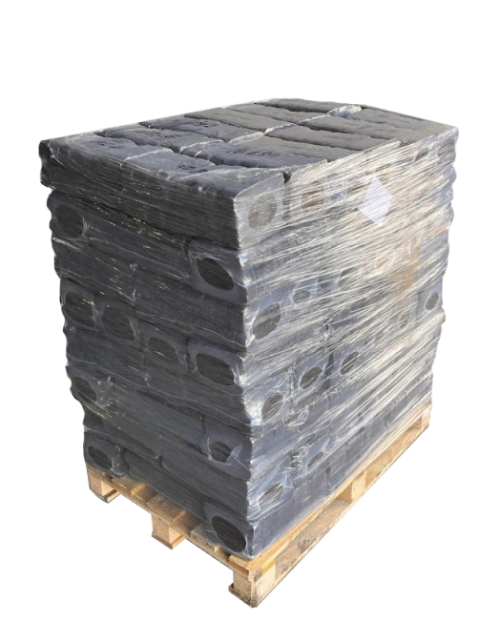Peat is one of the most important organic fertilizers, it has its own mineral base and the ability to retain moisture. Lowland peat (black peat) is more fertile than other types of peat because it contains more nutrients and trace elements.
It is used for fertilizing poor soils, for improving infertile land in order to give cohesiveness to sandy soils or for loosening clay soils. This type of peat is an ecologically clean product, when applied to the soil, peat creates a favorable water and air climate, replenishes the reserves of organic substances.

Embankment
The briquette meets the requirements of DSTU 2042-92 "Peat briquettes for communal and household use".
- Calorie content up to 4500 kcal/kg
- Mass fraction of total moisture up to 19.1% of total moisture
- Mechanical strength 95.6%
- Ash content 12-18%
- Dimensions 40-75/ 65 /180 mm
- Raw material 100% natural peat
- Type of packaging In bulk

Big bag
The briquette meets the requirements of DSTU 2042-92 "Peat briquettes for communal and household use".
- Calorie content up to 4500 kcal/kg
- Mass fraction of total moisture up to 19.1% of total moisture
- Mechanical strength 95.6%
- Ash content 12-18%
- Dimensions 40-75/ 65 /180 mm
- Raw material 100% natural peat
- Type of packaging Big-Bag bags (950kg~)

THERMAL INSULATION
The briquette meets the requirements of DSTU 2042-92 "Peat briquettes for communal and household use".
- Calorie content up to 4500 kcal/kg
- Mass fraction of total moisture up to 19.1% of total moisture
- Mechanical strength 95.6%
- Ash content 12-18%
- Dimensions 40-75/ 65 /180 mm
- Raw material 100% natural peat
- Type of packaging thermal film (10kg ~)
Main Feats
| Name of indicators | Standard according to DSTU 2042-92 | The obtained indicators |
|---|---|---|
| Mass fraction of total moisture (Wp) | 20% | 19.1% |
| Ash content (Ad) | 23% | 18.3% |
| Mechanical strength, %. | 94% | 96.6% |
| Heat of combustion Kcal/kg | >3500 | 4155 |
| Heat of combustion MJ/kg | >14.65 | 17.387 |
| Sulphur content, %. | - | 0.24% |
| Radionuclide contamination | not standardised | unseen |
